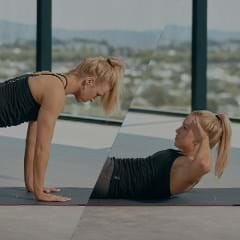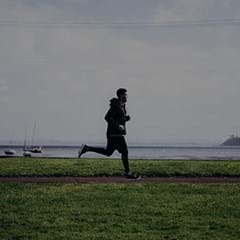Whether you go hard on the gym floor, sweat it out in the studio or pound the pavement, there’s no doubt exercise is a good thing. “But it’s no good powering through an early morning workout if all you’re going to do is sit on your butt for the rest of the day,” says Bryce Hastings, Les Mills Head of Research. “We know that even the most well-intentioned exercisers run the risk of negating their efforts by being less physically active than normal for the rest of the day. Or, in some cases, they eat more and consequently overcompensate for the calorie burn.”
It’s no surprise you can easily undo the positive effects of exercise. What’s remarkable is how easily you can amplify the benefits of exercise when you’re not working out.
It all comes down the science of Non-Exercise Activity Thermogenesis, otherwise known as NEAT.
NEAT is the energy expenditure that we don’t typically take into account. It might be energy expended as we work, stand, walk, talk, tidy the house, or even just fidget. These somewhat trivial-sounding physical activities can actually have a remarkable impact on our metabolic rate and, as a result, stimulate greater energy expenditure over time. The scale of this effect depends on the amount and type of physical activity you engage in and, most importantly, its thermogenic cost – which means how much the activity drives energy expenditure above your resting metabolic rate.
Do we all benefit from NEAT in the same way?
Not all NEAT is equal. Our individual biological factors – such as weight, gender and body composition – can create significant variances. Essentially the larger your body is the more energy it takes to move it – although overweight people often don’t see the benefits due to a tendency to sit more than lean people. Studies show that lean men and women stand, walk and fidget significantly more during the day, which results in an additional 350 calories expended above their obese counterparts.
Environmental factors – such as culture, wealth and work setting – can also have a big impact. Those engaged in manual labor tend to have a high NEAT, while levels of wealth and industrialization appears to decrease NEAT.
According to researcher Dr James Levine of the Mayo Clinic, who has studied the NEAT effect, it can vary between two people of similar size by up to 2000 calories a day. A typically healthy individual can burn around 330 calories a day, but it is possible for NEAT to burn between 700-1000 calories per day.
Is NEAT something you should measure?
In the past, obtaining a good gauge on NEAT relied on the development of sensitive physical activity monitoring devices (called inclinometers and triaxial accelerometers) that were attached to the hips and legs. Combined with other energy expenditure measurements, these provided data on body position across all plane of movement 120 times a minute to calculate NEAT.
These days, modern fitness trackers provide useful data on the effects of intentional and non-intentional exercise. Using these personal devices to monitor your activity levels can be interesting, but as Hastings points out, you’re better off simply focusing on making your lifestyle as active as possible.
“For some, tracking your steps and monitoring periods of inactivity can be great motivation, but it’s important that you don’t overcomplicate things – after all you don’t want to be sitting on your butt checking your activity stats when simply getting up and going for a walk on a regular basis is all it takes.”
How to maximize the power of NEAT
- Sustain good lipoprotein lipase (LPL) levels. LPL is a key enzyme when it comes to converting fat into energy. LPL levels will drop when you are sedentary, but by moving regularly throughout your day you can keep LPL levels stable – and support your body to burn fat.
- Be cleaner and tidier. Switch monotonous, lethargic tidying for a more enthusiastic approach to everyday chores and you’ll send your NEAT through the roof. Embrace opportunities to sweep and vacuum, reorganize cupboards or simply get out and weed your garden – not only is it great for your body, it’s good for your mental health too.
- Make your workday work. Take the stairs, stand when you’re at your desk, have standing (or better yet, walking) meetings, and instead of emailing a colleague, get up and go see them.
- Track your steps. Start using a fitness tracker and fuel your NEAT by doing at least 10,000 steps a day – this is the number the U.S. Department of Health recommends as an achievable goal for daily physical activity.
- Become an active relaxer. Be more mindful about how you relax – consider walking, restorative yoga, or chatting with a friend over simply sitting on the couch. And if you are relaxing on the couch make the most of an activity tracker that monitors periods of inactivity and sends alerts to get you moving.








